The 4 Pillars of Putting
GREEN READING – ALIGNMENT- DIRECTION - DISTANCE
By John Ambrose Director of Instruction at Hemlock springs G.C.
President of LATERAL LINE LLC. And Inventor of the L2 Line of Putters
GREEN READING
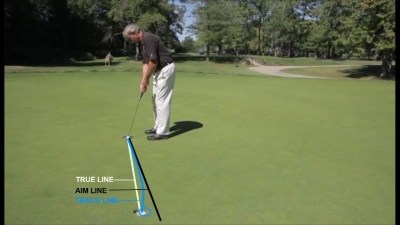
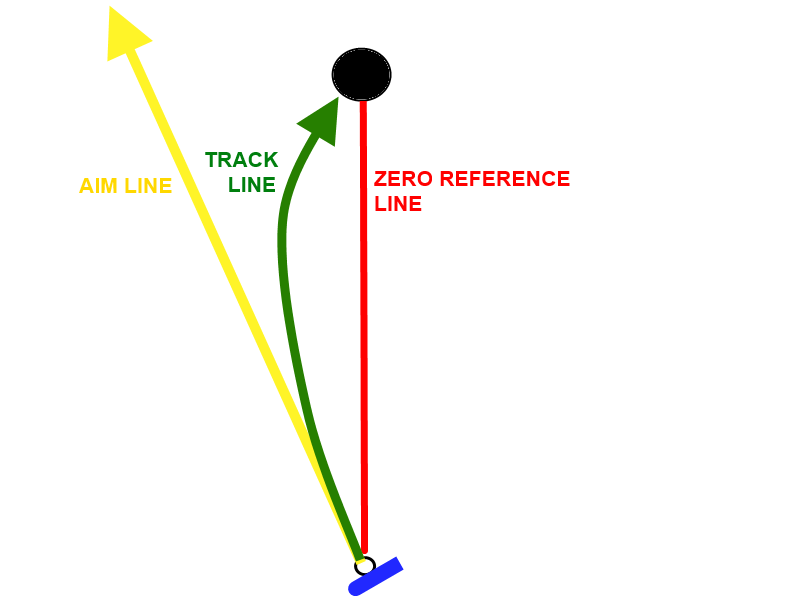
While green reading is the first step in putting, it is completely dependent on the other three aspects in order to be repeatably accurate.
If your alignment, direction, and or distance does not follow your green read accurately, then you will never know if your read was accurate or not. It won’t matter whether you take a green reading class, or even if you can use the previous roll of your buddy's putt to see the break, if you are not correct in these vital areas, you will miss.
A big advantage that is available to you on every putt, are the references you can use as a starting point during each phase of your read and alignment, let's call them the ZERO REFERENCE POINTS.
Using the straight line between the ball and the cup is a zero reference point that will give you a better view of the difference between a putt with no break, and the eventual track line to the cup.
Finding the track line, (the actual ball roll) and the aim line, ( the putter face and stroke direction) is a combination of distance, slope , grain, and green speed. Notice I said green speed and not ball speed. The green sets the speed, you only supply the energy into the ball that will produce the distance you need. If you controlled the actual speed of a putt, you would be able to putt a ball 10' fast or 10' slow. In reality, your job is to putt the ball 10'! A good point to make here is that the more energy you put into the ball, the faster the actual ball rotation will be. A ball that has a fast rotation will not be pulled by gravity as easily. This is why as the ball reaches the cup, it will tend to show more break, due to this slower end over end rotation.
The feel needed in order to improve your green reading will only happen with practice along with the biggest "zero reference" of all,consistent mechanics. If your club head and body alignment does not match your read,and your impact energy,(distance) face direction, and sweet spot contact, is not reliable, how can you expect to have any consistency ?
Before we start with the 3 remaining points to putting, let’s take a quick look at the best way to putt a ball, the pendulum stroke.
THE PUREST STROKE IN GOLF – THE PENDULUM MOTION
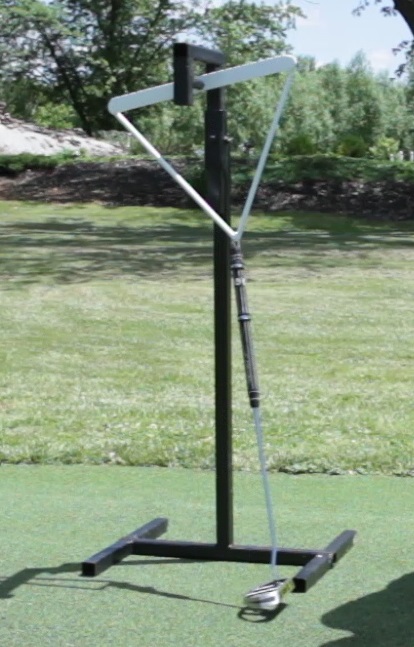
If it doesn't challenge you, it won't change you!
The pendulum stroke is unarguably the best way to putt a golf ball. It offers the most repeatable and dependable method of delivering a gravity fed energy to the ball in an exact direction, using a square face that is maintained up and down the aim line while using a momentum fed stroke size to determine the roll distance.
The precision pendulum stroke performs with a repeatable and effortless motion. The only input it requires from us is reading the green, alignment, and stroke size for distance. In contrast, the full swing gets its energy mostly from torque using weight shift and body rotation, along with shoulders, arms, and wrists.
Ball contact using the pendulum motion occurs simply because the ball "gets in the way” as the club moves down its intended line. The motion used from tee to green is clearly an accumulation of energy designed to be released at the point of ball contact, which is obviously a hit. It is important to understand that there is NOTHING about the full swing that should be transferred to putting. When you step onto the green, you need to leave all of that torque and turn behind you.
As we talk about each of the following 3 main aspects to putting, Alignment, Direction, and Distance, try to keep in mind how the pendulum works so you can work on copying this "Master of Putting".
ALIGNMENT
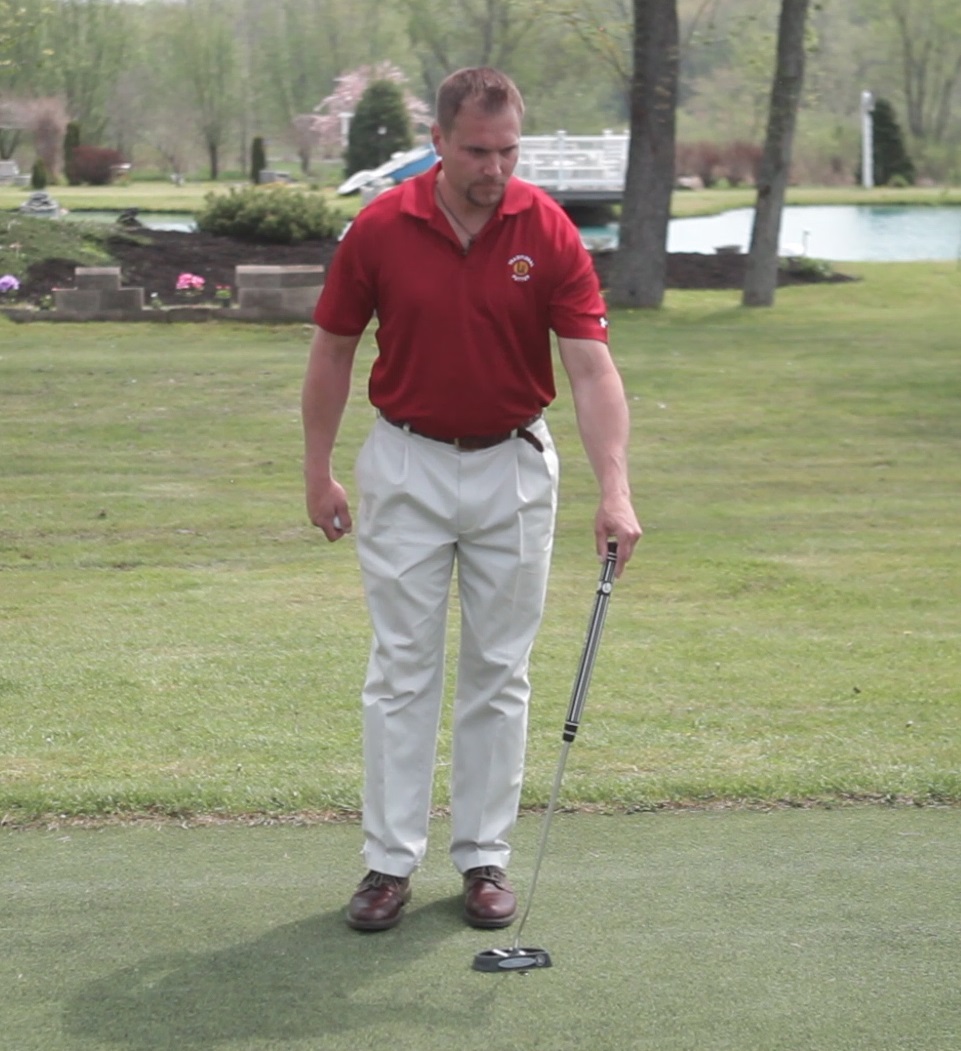
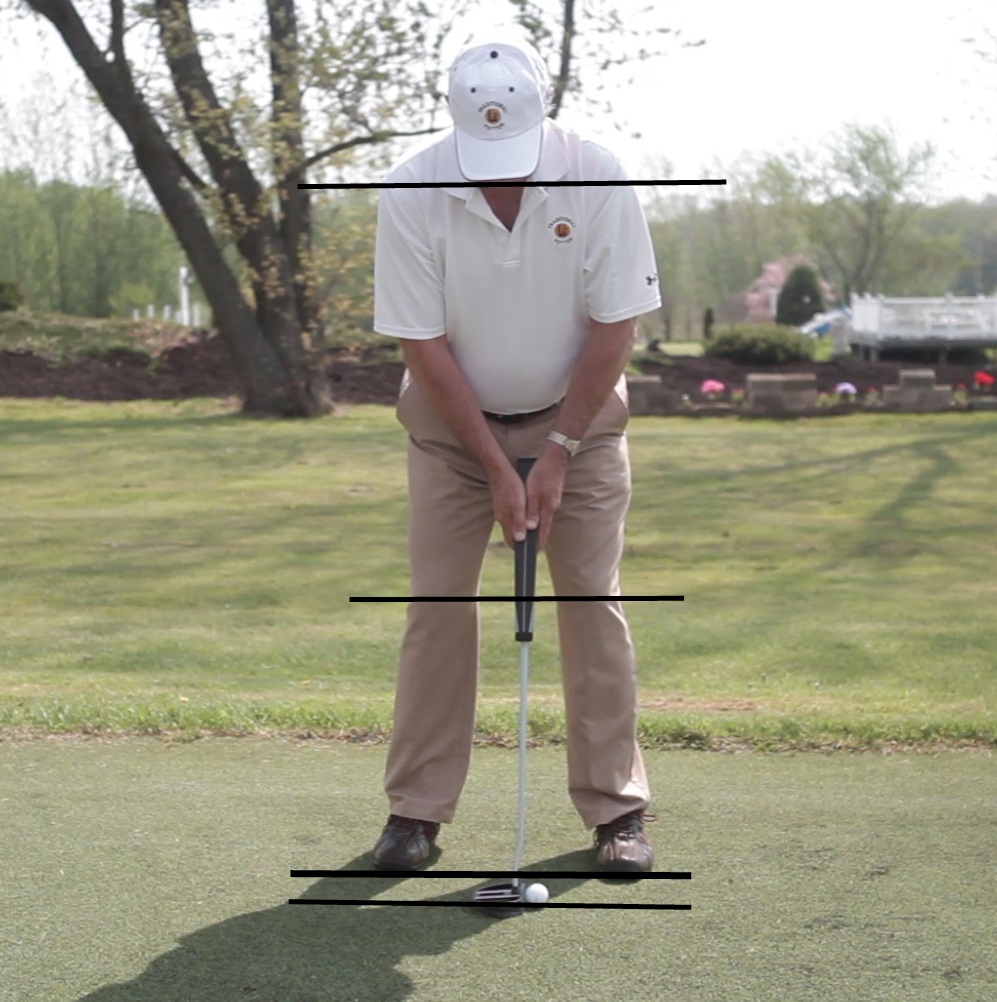
Proper alignment sets the stage for successful mechanics. Even if you had a pendulum machine to putt with, if it wasn't pointing down the intended line, you wouldn't make the putt. Keep in mind that just 1 degree off line on a 10’ putt will miss the cup.
Not only is it important to line the face up properly, it is also important to keep your eyes on the putter head as you align yourself to the club to avoid accidentally moving it off line. Too many times, I have seen a student do a great job of club head alignment, only to move the head all over the place as they take their stance, grip, and final look at the hole prior to the putt.
The putter head can serve as another "zero reference point" as you align yourself to the aim line. This personal alignment will set the stage for your mechanics to perform properly as you use the putter to parallel your toes, knees, hips, and shoulders to the line.
You also need to pay attention to the distance you are from the ball. If this distance changes even slightly, so will your stroke path. A comfortable and repeatable posture goes hand in hand with your proper distance from the ball. This is another opportunity for the putter head to give you another "zero reference point" as it maintains its lie angle position during your address.
The more time you take aligning the putter, (and yourself), for your stroke, the more you will be sure that it will actually take the club and eventually the ball, down your chosen aim line.
A word of caution: what you see from behind the ball during the alignment faze could easily look wrong once you are over the ball. So, don’t abandon your initial read and end up changing it once you are ready to putt. If it looks that bad, go back behind the ball and start over. Don't worry about the little extra time this may take. Getting this right is the object of the game, and when you do, it will be faster in the long run than needing to do it again when you miss. By committing to your alignment, you will establish more consistency that will lead to better green reading.
Accurate aim will set the stage for the next step in making more putts, direction.
DIRECTION
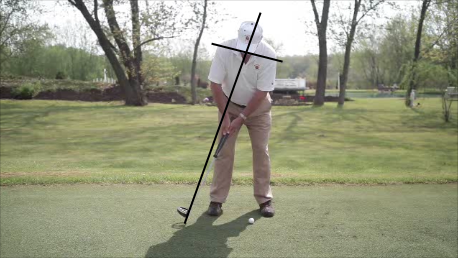
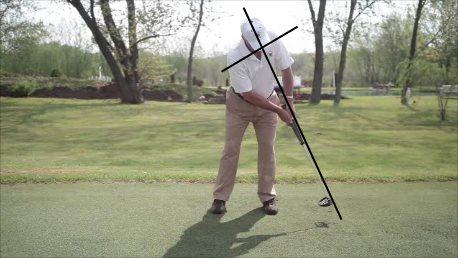
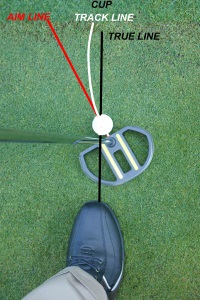
Accurate direction requires solid, repeatable mechanics. The motion of a pendulum is the best way to accomplish this. It is entirely possible to putt like a pendulum machine if you minimize what muscles and moving parts you use. The big muscles produce a smoother motion with less flexibility than the small ones, and are not as easily affected by Adrenalin, which can alter swing motion under pressure. It is not a coincidence that the best players work so hard to keep their little muscles out of the stroke, especially their dominant ones. They use everything from the claw to an arm anchor, in an effort to take those second guessing little muscles out of the motion.
A shoulder rock, (that keeps the V from your hands to your shoulders in place), will stabilize your motion and keep the putter face down the line. When speaking about shoulder rock, it is important to note that this motion is up and down and not in rotation. Every other club in your bag rotates your shoulders which encourages a screen door motion to the face. As was mentioned before, a good rule to keep in mind when putting is that there is absolutely no connection between your putting motion and your full swing. If you think that some part of the full swing will work on the putting green because it “feels natural” your putting will never be solid.
The number one rule in putting, (which goes for the rest of your clubs) is to make solid sweet spot contact. When you miss the sweet spot, you will lesson your energy transfer to the ball, (distance) and will oscillate the face either open or closed, (direction).
Number two in importance is a square face at contact. The best way to accomplish this is to keep it square throughout the stroke. Although stroke direction has some bearing on overall direction, it is not as important as face direction. Remember, it only takes 1 degree of face change to miss a 10' putt.
The more you can make solid sweet spot contact, while maintaining a square face throughout the motion, the better your direction (and distance) will be.
DISTANCE
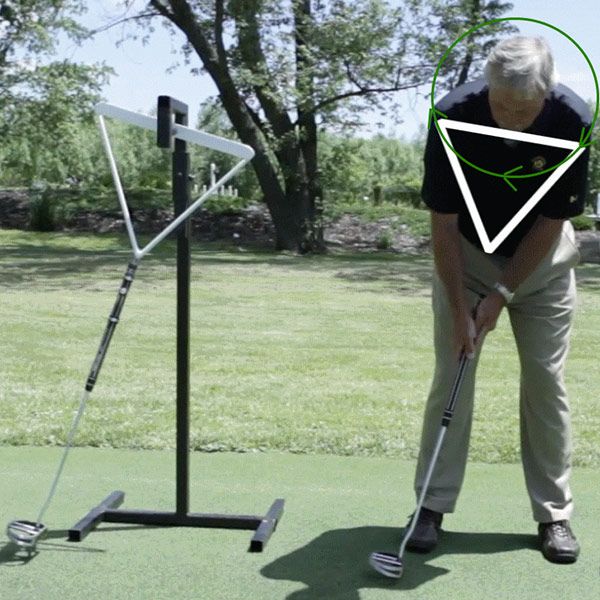
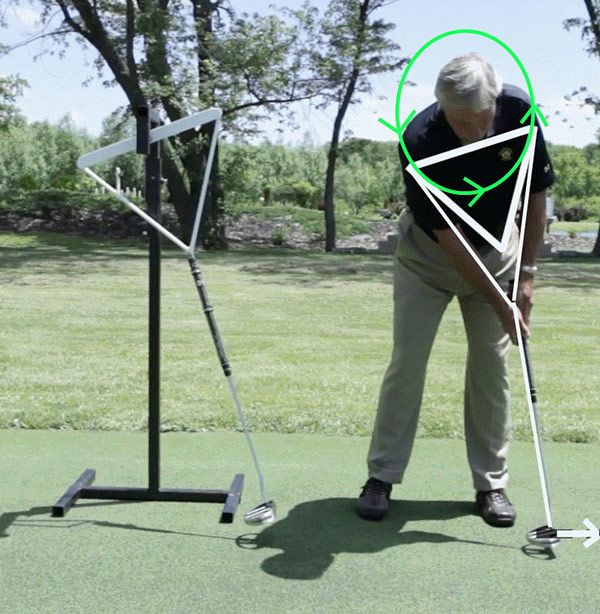
Distance is thought of as the most important part of putting and is the essence of applied touch and feel. While green reading needs some touch and feel in order to get a good picture of the ball roll, it has nothing to do with applied touch and feel. Distance is a product of depth perception and estimation based on the length of putt, green speed, and slope.
As we process the putt at hand, we translate what we assess into what we will need in energy transfer to the ball. The more precisely we can transfer this energy, the more accurately our distance control will be. If you had a pendulum machine to use, you would simply estimate the amount of backstroke you would need for the distance, pull it back and let it go. Gravity and tempo would then do the rest.
Since a gravity fed pendulum motion is always be the same, it now becomes a matter of finding the touch and feel to fit the conditions followed by the size of the stroke. A true pendulum motion goes though the ball, not to the ball. With a pendulum stroke, the ball simply gets into the way. When a backstroke becomes abbreviated, the only way to supply enough energy is the add some muscle power which will always become a hit.
On a long putt, the big muscles, (arms and shoulders) require a larger motion in order to add power, so the smaller muscles, (wrists, hands, and fingers) become involved. Add to this the inevitable Adrenalin rush that comes with pressure, and you are now trying to apply touch and feel using fast quick muscles that are made for hitting, not stroking. To truly find your touch and feel for distance, you need to look up and down the track line as you use your depth perception to feel the distance, rather than stare at the cup or a spot on the green. It is in the scanning of the distance that our depth perception comes to life. When you fixate on a spot, you will lose feel for the overall length.
The other problem with spot putting is the sub-conscious steering and in stroke corrections that can follow. Distance measuring is a time for busy eyes, not fixated ones. So look up and down the line from the ball down the track to the cup and back again. You will then sense the stroke size while you do.
If you give these tips a try, You will find a familiarity in every aspect of them as you set up each faze, in preparation for the next. Give your putting its own place in your game.
Remember what Ben Hogan said, “golf and putting are two completely different sports - One is played in the air, and the other on the ground.”
Click to add text...
Click to add text...
Click to add text...
Click to add text...
ARE YOU READY?
Take the putting test!
Are you ready to improve your short game!
Go to our Putting Test page and take the test.
Click to add text...
Click to add text...
Click to add text...
Click to add text...
Click to add text...
© 2024 Lateral Line LLC
Home | Guarantee | About Us | Contact Us |store

